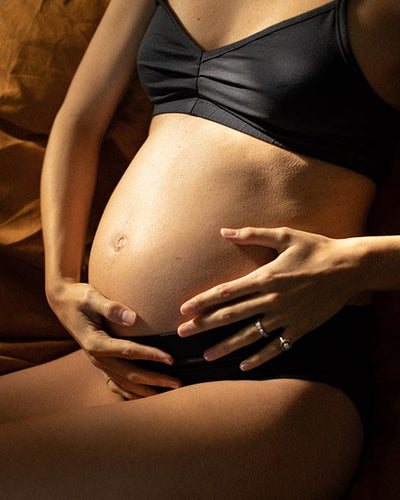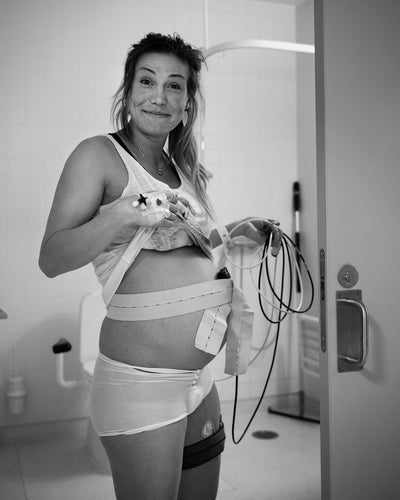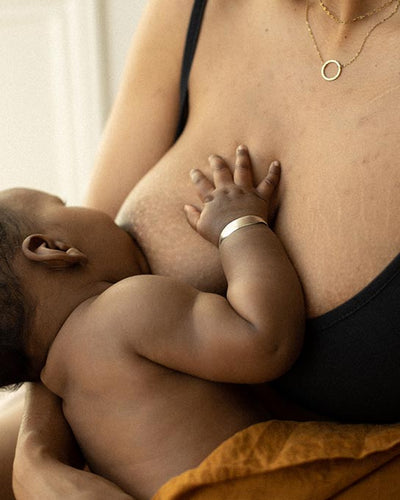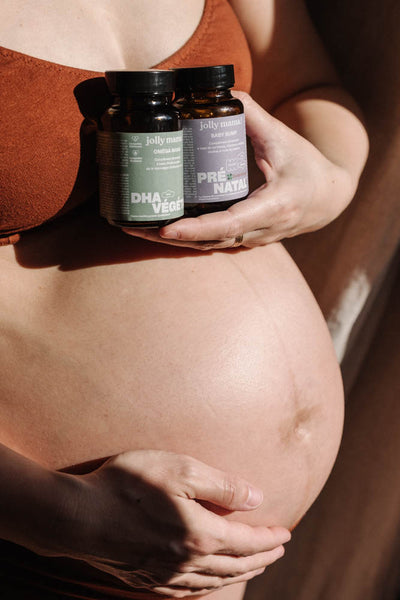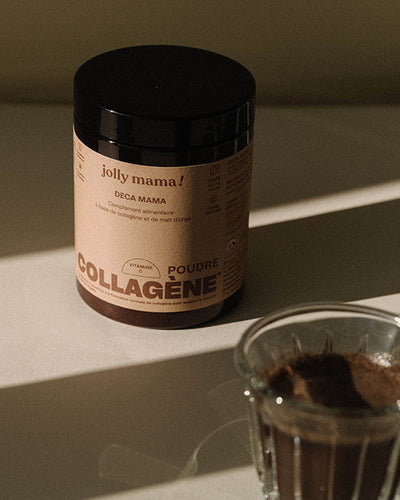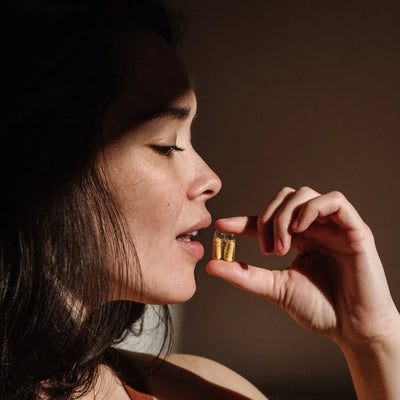Perturbateurs endocriniens et cycle menstruel
Les perturbateurs endocriniens vont avoir divers effets sur le cycle et la fertilité, les effets dépendant du type de perturbateur.
Par exemple, le pesticide DDT a été associé à une diminution des niveaux de progestérone et à une phase lutéale plus courte chez les femmes, d'environ 1.5 jour pour l’exposition la plus élevée au DDT [8].
Une étude a montré que les femmes présentant des taux sériques élevés de DDT avaient un âge précoce à la ménopause, de 5,7 ans plus tôt [9].
D’autre part, une étude a également révélé que l'exposition au TCDD (dioxine la plus toxique) était associée à un délai de grossesse plus long et à l'infertilité [10].
Globalement, ils vont favoriser un dérèglement hormonal.
Les perturbateurs endocriniens et le SOPK
Le syndrome des ovaires polykystiques (SOPK) est un dérèglement qui rassemble un large spectre de troubles affectant à la fois la sphère hormonale, métabolique et reproductive.
La perturbation endocrinienne par des produits chimiques environnementaux peut en effet contribuer à la pathogenèse du SOPK. Il est plausible que l'exposition in utero de fœtus humains de sexe féminin à des perturbateurs endocriniens chimiques de type androgène puisse entraîner un SOPK à l'âge adulte.
D'autres voies peuvent être impliquées dans la perturbation endocrinienne du SOPK. Les femmes atteintes de SOPK présentent des niveaux plus élevés de BPA (Bisphénol A, présent dans les emballages alimentaires et qui contamine les aliments) [11], et l'augmentation de la testostérone chez ces femmes est cohérente avec une diminution de l’élimination du BPA [12]. Bien que les expositions à l'âge adulte n'impliquent pas nécessairement des expositions plus précoces dans la vie, il existe des données démontrant des niveaux de BPA près de 5 fois plus élevés dans le liquide amniotique par rapport à d'autres fluides corporels, ce qui suggère une exposition prénatale significative [13].
Les perturbateurs endocriniens et l’insuffisance ovarienne
L'insuffisance ovarienne prématurée (arrêt de la fonction ovarienne correcte avant l'âge de 40 ans) survient chez environ 1 % des femmes en âge de procréer [14].
Comme le pool total de follicules ovariens est établi avant la naissance chez l'homme, tout ce qui interfère avec cela, entraînant une diminution de la réserve ovarienne, peut entraîner une insuffisance ovarienne prématurée.
L'exposition des souris au BPA, à l'âge adulte [15] et in utero [16], a entraîné des dommages aux ovocytes.
Actuellement, il n'existe pas de données sur l'exposition au BPA in utero ou à l'âge adulte chez l'homme, mais la possibilité qu'il existe des similitudes est probable.
L'exposition des rats à la TCDD (dioxine la plus toxique) in utero et jusqu'à la fin de la vie reproductive entraîne l'apparition, en fonction de la dose, d'une dégradation des cellules reproductrices, probablement due à des effets directs sur la fonction ovarienne [17]. La TCDD perturbe également l’hormone LH et sa stimulation par la FSH [18].
Perturbateurs endocriniens et risque de fibromes
Les léiomyomes utérins (fibromes) sont des tumeurs musculaires lisses bénignes du myomètre qui peuvent entraîner une morbidité chez les femmes, notamment des ménorragies, des douleurs abdominales, un prolapsus pelvien, l'infertilité et des fausses couches. Le plus grand facteur de risque chez les femmes adultes est l'exposition prolongée à des œstrogènes non bloqués.
Par exemple, les études montrent que le bisphénol A et les phtalates augmentent le risque et la gravité des fibromes [19].
Le lien entre perturbateurs endocriniens et endométriose
L'endométriose est un trouble gynécologique œstrogénodépendant le plus souvent associé à des douleurs pelviennes et dans certains cas à l'infertilité.
Une étude a révélé que l'exposition de singes adultes à la TCDD favorise la croissance et la survie des lésions d'endométriose, ce qui indique que ce perturbateur endocrinien est impliqué dans la progression, voire la pathogenèse, de cette maladie [20]. Des études chez la souris ont également montré ce lien [21].
Il existe également des résultats concernant les niveaux de phtalates dans le plasma et l'endométriose. Par exemple, des chercheurs ont trouvé des concentrations plasmatiques élevées de phtalate chez des femmes atteintes d'endométriose [22].
Une augmentation du risque de cancer du sein
Une hypothèse a été avancée selon laquelle l'augmentation significative de l'incidence du cancer du sein dans le monde industrialisé observée au cours des 50 dernières années pourrait être due à l'exposition à des produits chimiques à action hormonale, en particulier les xénoestrogènes [23].
Des études qui ont mesuré l'exposition plusieurs années avant le diagnostic du cancer ont révélé un lien positif entre le cancer du sein et l'exposition chimique au toxaphène [24] et au DDT [25]. En particulier, l'étude a établi un lien entre le DDT et un risque accru de cancer du sein lorsque l'exposition a été mesurée avant l'âge de 14 ans. Cette étude a utilisé des échantillons prélevés avant l'interdiction du DDT à des fins agricoles et représente donc des expositions plus élevées que celles mesurées aujourd'hui, car on retrouve encore des traces de DDT dans les sols et les eaux, et donc dans l'alimentation.
Chez les animaux exposés au BPA par voie périnatale, on observe également une augmentation significative des cellules positives pour le récepteur de la progestérone (PR+) à la puberté (le cancer PR+ est une forme de cancer du sein). Chez le rat, l'exposition fœtale au BPA multiplie par trois ou quatre le nombre de lésions pré cancéreuses, un effet également observé à la puberté et pendant la vie adulte [26].

